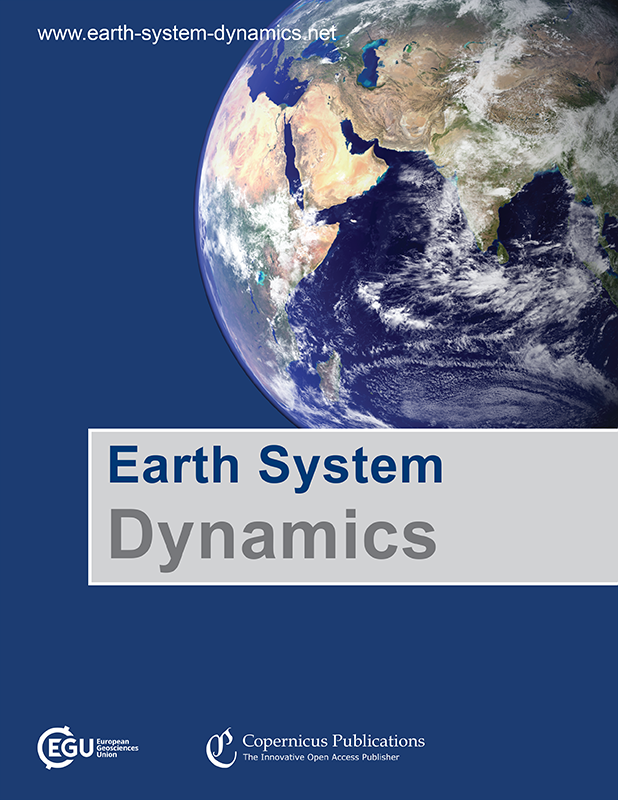基于遥感数据的 HTESSEL 陆面模型中的年际土地覆盖和植被变化:实施情况及其对模拟水动力学的影响
IF 7.2
2区 地球科学
Q1 GEOSCIENCES, MULTIDISCIPLINARY
引用次数: 0
摘要
摘要植被在很大程度上控制着地表与大气的相互作用。虽然植被在空间和时间尺度上具有高度动态性,但目前用于再分析和近期气候预测的大多数陆表模式并不能充分反映这些动态。这就造成了模拟的水和能量状态以及来自地表的通量的变异性存在缺陷。在这项研究中,我们评估了在水文平铺 ECMWF 陆地表面交换方案(HTESSEL)陆地表面模式中整合卫星观测得出的时空变化的土地覆盖和植被特征对模型蒸发和土壤湿度的影响。具体而言,我们整合了欧洲空间局气候变化倡议(Climate Change Initiative)的年际间变化土地覆盖和哥白尼全球陆地服务(CGLS)的年际间变化叶面积指数(LAI)。此外,我们还利用哥白尼全球陆地服务的绿色植被覆盖率(FCover)卫星数据,制定并整合了时空变化的有效植被覆盖参数。利用全球尺度的历史离线(纯陆地)模型实验分析了这三种实现方式对模型蒸发通量和土壤水分的影响,并利用全球蒸发(E)和近地表土壤水分(SMs)观测产品对模型性能进行了量化。年际变化的土地覆被持续改变了土地覆被发生重大变化地区的蒸发量和土壤水分。与参考数据相比,年际变化的 LAI 显著改善了 SMs 和 E 的相关性,在旱季植被主要较低的半干旱地区改善最大。这些改进与年际变化的 LAI 结合年际变化的有效植被覆盖度(定义为 LAI 的指数函数)在植被缺水期激活土壤水分-蒸发反馈有关。总之,我们的研究表明,植被可变性的增强持续改善了近地表土壤水分和蒸发的可变性,但可靠的全球观测数据的可用性仍然是全面理解模型响应的限制因素。为了进一步解释所发现的改进,我们建立了一个解释框架,说明在植被水分胁迫期,模型的发展如何激活土壤水分、植被和蒸发之间的反馈。本文章由计算机程序翻译,如有差异,请以英文原文为准。
Interannual land cover and vegetation variability based on remote sensing data in the HTESSEL land surface model: implementation and effects on simulated water dynamics
Abstract. Vegetation largely controls land surface–atmosphere interactions. Although vegetation is highly dynamic across spatial and temporal scales, most land surface models currently used for reanalyses and near-term climate predictions do not adequately represent these dynamics. This causes deficiencies in the variability of modeled water and energy states and fluxes from the land surface. In this study we evaluated the effects of integrating spatially and temporally varying land cover and vegetation characteristics derived from satellite observations on modeled evaporation and soil moisture in the Hydrology Tiled ECMWF Scheme for Surface Exchanges over Land (HTESSEL) land surface model. Specifically, we integrated interannually varying land cover from the European Space Agency Climate Change Initiative and interannually varying leaf area index (LAI) from the Copernicus Global Land Services (CGLS). Additionally, satellite data on the fraction of green vegetation cover (FCover) from CGLS were used to formulate and integrate a spatially and temporally varying effective vegetation cover parameterization. The effects of these three implementations on model evaporation fluxes and soil moisture were analyzed using historical offline (land-only) model experiments at the global scale, and model performances were quantified with global observational products of evaporation (E) and near-surface soil moisture (SMs). The interannually varying land cover consistently altered the evaporation and soil moisture in regions with major land cover changes. The interannually varying LAI considerably improved the correlation of SMs and E with respect to the reference data, with the largest improvements in semiarid regions with predominantly low vegetation during the dry season. These improvements are related to the activation of soil moisture–evaporation feedbacks during vegetation-water-stressed periods with interannually varying LAI in combination with interannually varying effective vegetation cover, defined as an exponential function of LAI. The further improved effective vegetation cover parameterization consistently reduced the errors of model effective vegetation cover, and it regionally improved SMs and E. Overall, our study demonstrated that the enhanced vegetation variability consistently improved the near-surface soil moisture and evaporation variability, but the availability of reliable global observational data remains a limitation for complete understanding of the model response. To further explain the improvements found, we developed an interpretation framework for how the model development activates feedbacks between soil moisture, vegetation, and evaporation during vegetation water stress periods.
求助全文
通过发布文献求助,成功后即可免费获取论文全文。
去求助
来源期刊

Earth System Dynamics
GEOSCIENCES, MULTIDISCIPLINARY-
CiteScore
13.20
自引率
5.50%
发文量
61
审稿时长
36 weeks
期刊介绍:
Earth System Dynamics (ESD) is a not-for-profit international scientific journal committed to publishing and facilitating public discussion on interdisciplinary studies focusing on the Earth system and global change. The journal explores the intricate interactions among Earth's component systems, including the atmosphere, cryosphere, hydrosphere, oceans, pedosphere, lithosphere, and the influence of life and human activity. ESD welcomes contributions that delve into these interactions, their conceptualization, modeling, quantification, predictions of global change impacts, and their implications for Earth's habitability, humanity, and the future dynamics in the Anthropocene.
 求助内容:
求助内容: 应助结果提醒方式:
应助结果提醒方式:


